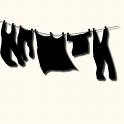Hudson (1997) shows how the professional knowledge of social work can be categorised into five areas. These are theoretical, empirical, procedural, practice wisdom and personal knowledge.
Throughout my time at university, it has been expected that my own personal practice framework would develop, and now that I am at the end, it has become important for me to be able to articulate this framework. Early on I decided I wanted to be creative with my framework and have a picture that I could create and discuss. Whilst words could explain a framework in more detail, a picture as they say, paints a thousand words.
My internet search found another person who referred to a picture for her personal practice framework – the picture was a window and how each aspect of the window related to her social work practice was explained (Bayliss 2008).
Two organisations also presented frameworks in a pictorial way. The first is the Queensland Department of Child Safety, who use diagrams, boxes and arrows to show their framework (Child Safety 2009). Secondly, Centacare Rockhampton diocese uses the Chive Flower as their representation of their practice framework (Centacare 2009).
I was quite aware of theories that have influenced me during my university studies, and placements. The strengths perspective seemed to work well in many case studies that I was exposed to and is something I have been reading more about over the past few weeks. We have a variety of resources available at Centacare that I have seen used during group or individual sessions. The strengths cards were used as an ice breaker during a group. Participants were encouraged to choose one word that they could use to describe themselves at this moment in time. It was interesting to hear peoples own perceptions. During residential school earlier this year, a lecturer recommended a book to those of us who identified the strengths perspective as something they would be using in their personal practice framework. I am now about half way through the book and also recommend it. This easy to read and understand book with practical examples of how to implement the strengths perspective is called the strengths approach, by Wayne McCashen.
Back to my creativity and my search for an image. A quick think did not produce an image that instantly sat right with me. Rather than waste time, and potentially end up frustrated at not finding my image, I spent time on the words, aiming to articulate the five categories as identified by Hudson (1997). The image, I decided would show itself when ready – and it has:
THE HILLS HOIST FOLDABLE CLOTHESLINE

Let me paint the picture for you.
My self is a white female born in Australia, to a mother, who was also born in Australia and a father, born in Croatia. The Hills hoist is now an Australian icon, and whilst I'm not saying I'm an Australian icon, the hoist image can play its part in showing my cultural identity.
The hoist has a pole embedded into the earth, at the current time, my Hills hoist is implanted in earth in regional Australia, but has previously been planted in capital city Australia in previous years. My Hills hoist may move again in the future. My hoist has arms and wires reaching out to create its framework - this is representative of my theoretical framework, with systems and strengths currently on the outer row, the largest on the clothesline because I have read the most about these perspectives and use them most often. Other theories play their part in my practice and take up the smaller rows - child development, play and narrative therapies, grief and loss, task centred and client centred approaches.
I can hang different clothes on the hoist. These clothes represent the people or groups I work with. Other articles I can hang on the line represents my skills, such as report writing, interviewing skills, computer skills etc. I can change the items hanging depending on where I am working or who I am working with.
The Hills Hoist has a handle that can be turned to raise or lower the clothesline. This represents my values, ethics and boundaries. The AASW Code of Ethics and professional values that I hold as a social worker provide guidelines there to protect my clients. My values and boundaries guide my practice and the handle on the clothesline, as it raises and lowers allows me to determine the correct levels of my values, ethics and boundaries in any given situation.
Finally, many Hills hoists come with a feature that allows it to be folded in when not in use. This represents my self care. When it is time to end my day and return home to my husband and children, I undertake the mini ritual of folding in for the day, allowing me to take off my social worker hat and put on my wife and mother hat.
My time at university and my 2 placements have helped to develop my personal practice framework. The next 30 or more years of work will no doubt see this framework develop and change as my skills expand, different theories influence my work and my client groups change.

References
Bayliss, M 2008, What is a personal practice model?, viewed 1 October 2009, http://www.imaginif.com.au/what-is-a-personal-practice-model/
Centacare 2009, Story of the flower, viewed 1 October 2009, http://www.centacare.net/index.php?option=com_content&view=article&id=54&Itemid=80
Hudson, JD 1997, 'A model of professional knowledge for social work practice', Australian Social Work, vol. 50, no. 3, pp. 35-44 (online EBSCOHost).
McCashen, W 2005, The strengths approach, St Lukes Innovative Resources, Bendigo.
Queensland Department of Child Safety 2009, Child safety practice framework, viewed 1 October 2009, http://www.childsafety.qld.gov.au/practice-manual/framework/map.html